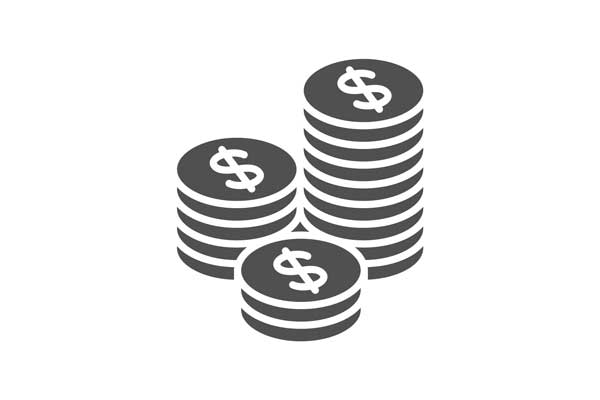Ideally, you have a sizable nest egg saved for retirement, but many people aren’t sure how to do that beyond allocating a percentage of money to their work 401(k) program.
Fortunately, it’s easy to make some decisions now that could ensure a more stable retirement—and you don’t need to have a lot of financial knowledge to implement them. Whether you’re just starting to save for retirement or you’re approaching retirement and trying to double down on some last-minute strategies, you can always do something to tuck more money away.
Here’s a look at five tips to help you save as much as possible for retirement.
“Saving Smart” for Retirement
1. Start As Soon As You Can
Compound interest is one of the best ways to see a retirement nest egg grow: your investments generate earnings that are reinvested to create even more earnings.
Let’s say you started saving for retirement at age 25, invested $3,000 every year for 10 years, and then stopped. By age 65, you’d have about $340,000 using a 7% return. Using that same math, if you started saving at age 35 with $3,000 a year for the next 30 years, your money would only grow to about $300,000.
This example proves that time is a significant factor for leveraging compound interest to save more money—especially when you consider the total amount invested during the time periods: $30,000 vs. $90,000.
That said, don’t be discouraged if you started saving later. If you’re still working, contribute as much to your 401(k) as possible to catch up. Once you reach age 50, you can also start making extra contributions to your tax-advantaged retirement accounts.
2. Meet Your Match
If your employer matches your 401(k) contributions, make sure you’re putting in at least enough to meet that match. Otherwise, you are leaving free money on the table.
- The 2023 employee contribution limit is $22,500.
- The 2023 total contribution limit is $66,000, a sizeable amount when combined with an employee 401(k) matching plan.
- The 2023 catch-up contribution is $7,500. If you’re 50 or older, you can contribute up to $30,000 in 2023.
3. Set Up Automatic IRA Investments

Source: Getty
If you’re already investing in your company 401(k), great! But you can go beyond that to make your earnings grow even more with an IRA account, which you can contribute to at any time.
One of the best ways to see an IRA grow is to set up recurring investments from a savings or checking account. Even if it’s a small amount, like $10 or $20 a week, saving this way is much easier than writing a large check each year to hit your IRA contribution limit. The 2023 limit is $6,500, but those aged 50 and older can invest an additional $1,000 via a “catch-up limit.”
Gradual, recurring investing gives your money more time to grow, too. A $2,400 one-time investment made at the tax deadline will see less of a yield than a recurring $200-per-month investment.
4. Diversify Your Investments and Check on Them Regularly
Once you’ve maximized your contributions to tax-advantaged retirement accounts, you can keep saving and investing in regular brokerage accounts like stocks, bonds, mutual funds, and ETFs. Adding these accounts to your retirement portfolio allows for long-term growth, and there’s no limit to how much you can invest.
You can manage these investments yourself, but a financial advisor can also help find additional opportunities to maximize your investments. Prioritize regular check-ins with your advisor to ensure you stay on the right track.
5. Cut Spending and Invest The Difference
As you examine your spending habits, search for areas where you can cut back. Maybe you reign in your streaming services subscriptions or negotiate a better car insurance rate. Tally up these savings and invest the difference. Even small changes can have a massive impact on your retirement savings.
Case in point: At age 50, if you increase your contribution rate from 4% to 6%, you could add more than $54,700 to your nest egg over the next 15 years, assuming a $70,000 salary.
Want to Get The Most From Your Retirement?
Saving for retirement can be a daunting task, but planning for it now helps ensure you’re more financially secure later. Remember, saving something is better than saving nothing, and you’re never too old to make small changes that could have a significant impact.

